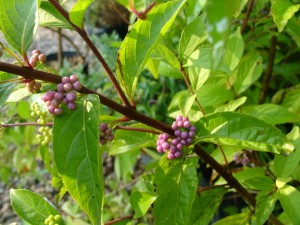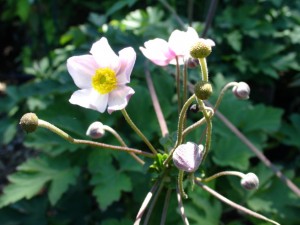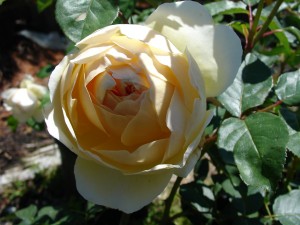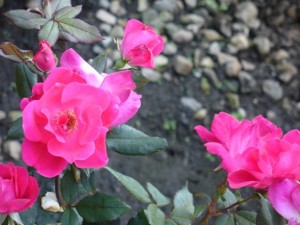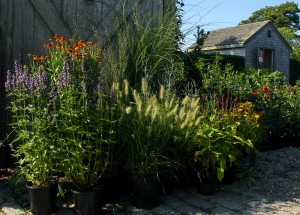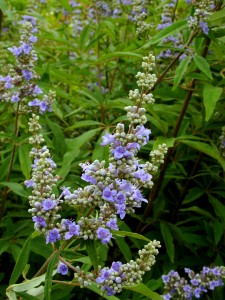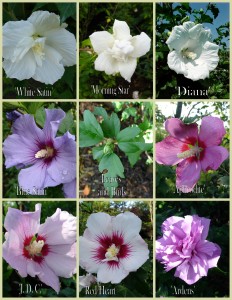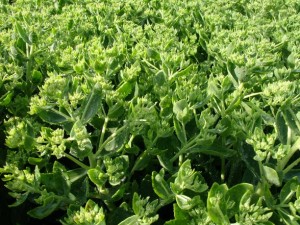
When most gardeners think of vines, they picture them growing on tuteurs and trellises. But there is no need to pull out your hammer and nails every time you bring home a vine to plant!
There are plenty of vines that happily scramble along the ground, filling gaps and smothering weeds. Many of these will produce far more flowers grown horizontally. Clematis are a perfect example of this. Plant them at the front of the border and train them along areas often reserved for bedding plants, and they will reward you with a long show of flowers. Or let them flow around your shrubs, in waves of color. A Sweet Autumn Clematis in full flower is much like a wave cresting in the garden!
Vines can be a great solution to filling in shady areas, too. English ivy makes a fantastic green groundcover for deep shade. Why not use a Climbing Hydrangea along the ground? We’ve planted it below our welcome sign at the entry to the nursery. H. anomala petiolaris var. tilifolia has much smaller leaves than the species and will tightly hug the ground. Other options to consider are Schizophragma hydrangeoides, Akebia quinata or the ever popular Vinca minor.
We have a wide selection of vines in stock, why not consider one the next time you need to cover the ground in a hurry?


